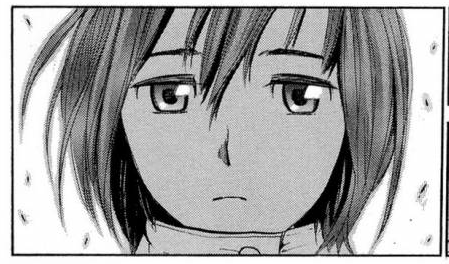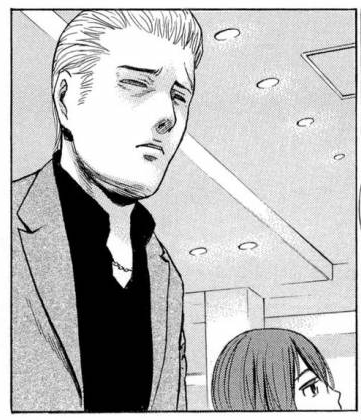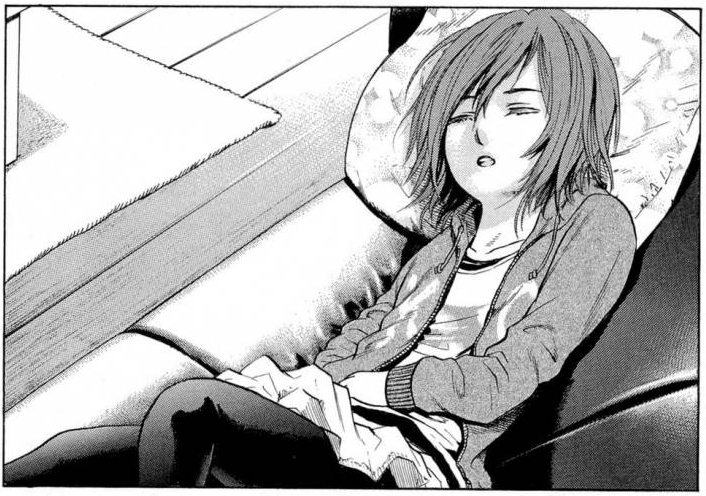Hooray for Hinamatsuri
Although not especially well known in America, manga stories about yakuza and the daily life of gokudo have been common in manga for decades. Likewise, manga starring psychic adolescent girls date back to at least Masahiro Shibata’s 1981 serial Akai Kiba Blue Sonnet, if not earlier. But few manga combine the disparate genres, or do so as effectively, as Masao Ohtake’s 2010 comedy series Hinamatsuri. On the heels of the series premiering as an acclaimed anime television series in April 2018, One Peace Books has brought the original Japanese distinctly odd couple style manga to English speaking readers.
Hinamatsuri, or “Hina Festival,” revolves around yakuza mid-boss Yoshifumi Nitta, whose comfortable and secure routine get upended when a time-traveling psychic teenage girl literally falls into his life. The girl, who refers to herself only as “Hina,” has a particularly lazy attitude and the limited awareness of a highly sheltered individual. She also reveals hints of having been used and mistreated by her former guardians. Upon arriving in Nitta’s life, without any clue of what else to do, Hina makes herself at home, and partly under duress, and partly out of sympathy, Nitta grudgingly begins caring for his new ward like a surrogate parent. The odd coupling of a young adult mobster taking care of an apathetic yet potentially dangerous schoolgirl inspires plenty of goofy situational comedy. Nitta’s strangely narrow-minded perspective combined with Hina’s absence of common sense further escalates the story’s silly sitcom humor.
Ohtake’s composition is very functional if less than fully masterful. Panel layout guides the reader’s eye easily along the page, and transitions and chronological jumps are easy to distinguish. However, possibly because Hinamatsuri was Ohtake’s first published work, character art is consistently a bit stiff, and character models are not always consistent. Many of the characters tend to look slightly younger or older in varying panels because the art design isn’t strictly consistent. The writing is concise, focusing alternately on exposition and punchlines. Jokes are often a combination of sight gags with dialogue punchlines thereby making the jokes highly universal and timeless. The jokes are often situational but equally often rely on unexpected reactions or priorities. Conservative readers ought to be forewarned that the first volume of Hinamatsuri does make brief, subtle reference to prostitution. The book also includes blunt reference to alcohol consumption including humorous suggestion of underage drinking. Despite the story revolving around a gangster, violence is minimal and is primarily depicted comically rather than harshly. The first volume contains the stories’ first five chapters plus two bonus short vignettes. Viewers familiar with the anime will be pleased to know that manga chapters 3 & 5 and the first “extra” chapter were not adapted in the anime television series. Furthermore, viewers familiar with the anime may be surprised to find that supporting character Anzu appears only in a brief cameo introduction, and Mao does not appear in the first manga volume at all.
One Peace Books’ translated presentation of Hinamatsuri volume 1 meets the high standards contemporary manga readers expect. The English language translation reads naturally and is free of grammatical errors. Japanese honorifics are excluded or translated with the exception of “-gumi” added to the end of the yakuza family names. Japanese text is kept intact. Sound effects are unobtrusively translated in frame. The translation does include a few utterances of a singular expletive, the “s-word.” The graphic art presentation is clean and crisp. The limited use of screentones is clear. The book retains the original Japanese cover art. All interior pages are monochrome, as was the original Japanese publication.
New readers ought to find Hinamatsuri, its characters and situations, quite enjoyably humorous. The comedy is consistently very natural yet also unpredictable. Readers approaching the original manga after watching the 2018 anime adaptation, however, may find the original manga just a bit less defined and insightful. Particularly the Hina depicted in the original manga is very slightly more attentive and engaged with her surroundings than her utterly apathetic anime incarnation. But the manga’s inclusion of chapters excluded from the anime make the manga a worthwhile read even for fans of the anime.







